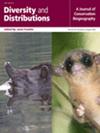Conservation Biogeography of Mountain Vipers: A Phylogenetic Niche Modelling Approach
Abstract
Aim
Mountain vipers belonging to the Montivipera genus represent a fascinating example of neo-endemism found in the high plateaus of Iran, Anatolia and the Caucasus. Given the conservation challenges faced by these species, it is crucial to understand their phylogenetic relationships and suitable habitats in order to implement effective conservation strategies. In this study, we integrated phylogeny and Ecological Niche Modelling (ENM) techniques to investigate the conservation biogeography of mountain vipers.
Location
Irano-Anatolian, Caucasus and Levant.
Methods
We first reconstructed phylogenetic tree of the species, and then, by using a set of occurrence records of the identified clades and environmental variables we modelled ecological niche of the species using the MaxEnt model and PCA-env analysis. Finally, we conducted a gap analysis to assess the conservation status of the species, taking into account their representation within Protected Areas (PAs) in the region.
Results
The results revealed a well-resolved phylogenetic divergence of the species into three main clades and 12 lineages, which corresponded to their geographic distribution. Results of the MaxEnt model showed excellent predictive performance (AUC > 0.9 and TSS > 0.8) for all species. Both ENM analyses demonstrated varying levels of ecological niche conservatism, divergence and convergence across environmental gradients. The gap analysis showed a better representation of mountain vipers within Iran's PAs (20.3% overlap), particularly compared to those in Turkey (2.9%).
Main Conclusions
We designate mountain vipers as phylogeographic focal species due to their isolated distribution in the region's mountains and the significant overlap of their suitable habitats with paleontological refugia. We emphasise their significance in promoting PAs and prioritising conservation efforts for the region's biota.


 求助内容:
求助内容: 应助结果提醒方式:
应助结果提醒方式:


